Kununurra: Jewel of the Kimberley
Swimming with crocodiles is generally considered unwise. Not at this Western Australia destination.
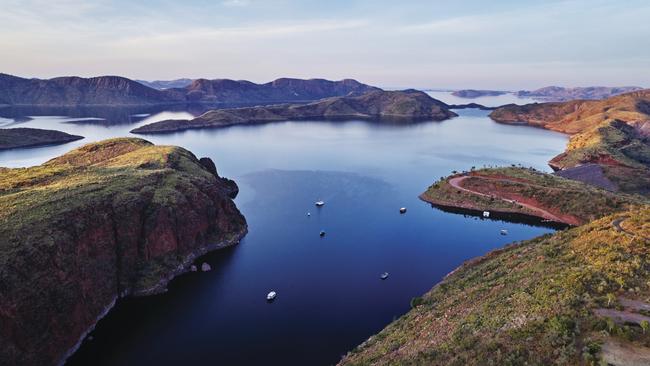
There have been a few things in life I was convinced I’d never do, including jumping out of a plane, getting a tattoo and swimming with crocodiles. While the first two vows are safe for now, the third is well and truly broken on a cruise across Lake Argyle and up the Ord River.
Australia’s second-largest freshwater reservoir, Lake Argyle was formed by the Ord River Dam project in the early 1970s. The goal was to irrigate the eastern Kimberley countryside, back then a desert-like landscape of boabs and beehive rock formations, and little else. Today, the waterway — so huge it hosts 70 islands and is classified an inland sea — and its river tributaries support superfood farmlands, fields of cotton and sunflowers, and seemingly endless sandalwood plantations. And more than 30,000 freshwater crocodiles.
In Miriwoong country near the Northern Territory border, welcome to Kununurra, the Kimberley’s youngest town, where crocs outnumber humans (and humans think nothing of swimming with them); where birds can flock in the tens of thousands; and where each day’s searing sunset is as vivid as the last.

The town takes its name from the Indigenous phrase “meeting of the big waters”, so it comes as no surprise the best way to get your bearings is by boat. I jump aboard our open-air watercraft with Triple J Tours. We skim over the mirrored surface of the Ord River, Captain Ben pointing out pandanus, paperbark, coolibah and river red gums on the banks. They’re framed by cycads (the oldest living plants known to humans) and enormous boabs, some standing here for a millennium.
In the branches of eucalypts, seemingly millions of fruit bats create a chorus that competes with the sound of the boat’s motor. “There are so many of these critters the crocs just sit quietly on the shore with their mouths open,” Ben says. “No wonder they don’t go after humans; that would be way too much effort.”
The “freshies”, as these crocs are known, lay their eggs on the river’s sandy beaches, one of which I use as a launch point for my mid-morning dip. Kayakers paddle around me, and kids dive-bomb into the water from rocks. No one seems perturbed by what lies beneath or the glassy eyeballs that occasionally break the water’s surface. “It’s the larger saltwater crocs you need to worry about,” Ben says. “But you won’t find them here.”
Back on the boat we spot osprey and white-bellied sea eagles, as well as comb-crested jacana padding between candy-coloured waterlilies. A flock of whistling kites gathers overhead, moving in graceful circles toward the tree line. “They may look pretty, but these birds are tough,” Ben says. “The locals call them ‘fire starters’ because they’ve been known to drop burning twigs into the bush to flush out food, making easy meals of insects and other small animals trying to flee the blaze.” This is a hard wilderness.
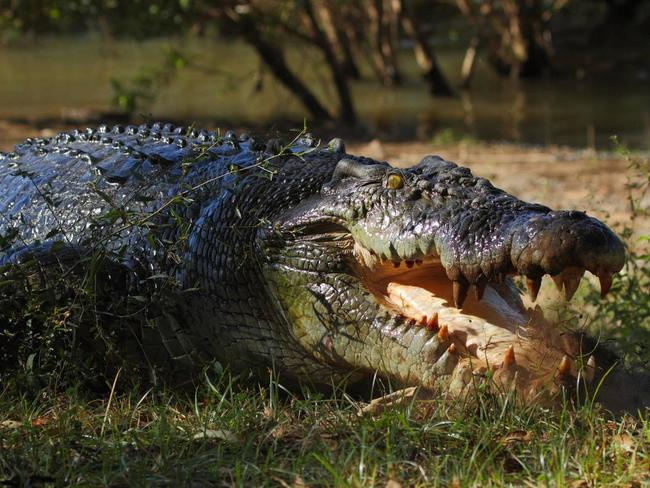
Before skirting back to town, we pass under power lines that lead to the Argyle Diamond Mine, less than 100km away. For decades it produced 90 per cent of the world’s most precious pink diamonds. But Argyle’s operations were expensive, prohibitively so, and the mine chipped its last gem at the end of last year, announcing it would return the site to the community. The closure has only compounded the rarity of these stones; literally one in a million diamonds is pink. They warrant spectacular price tags at Kimberley Fine Diamonds, a Kununurra boutique established by German native Frauke Bolten-Boshammer. This unassuming store is a jewellery box for some of Australia’s priciest gems, with a pink diamond fetching up to 120 times the amount paid for its equivalent in white. I have my eye on a 0.36-carat stone selling for a cool $798,165.
Despite their value, up to 60 per cent of rough diamonds are lost to dust when being polished into shape. “I hate to think how much money we vacuum up every day,” Bolten-Boshammer says.
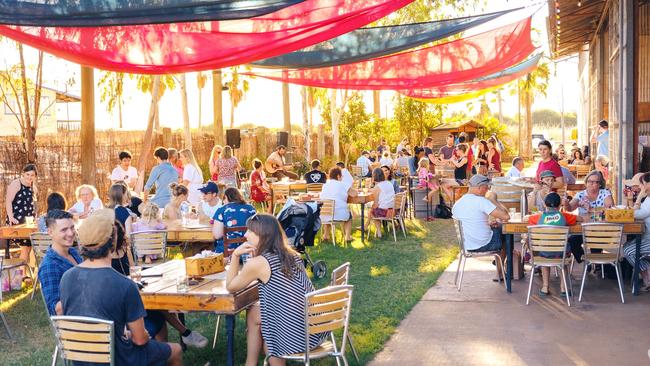
On the outskirts of town, Hoochery has also made it into Western Australia’s record books by earning the title of the oldest distillery. Chief maker Margaret Lyons muddles rums using local sugar cane, flavouring her batches with Kununurra ingredients such as boab nuts and mango. The open-air dining room is set in the one-time packing shed, with distilling barrels decorating walls and furniture fashioned from recycled pallets. “We don’t mind if you dance on the tables here,” says Lyons, which is a distinct possibility, given the ferociousness of her spirits. I order barramundi tacos to accompany a tasting paddle of Lyons’s favourite creations: a tropical spiced rum, a 15-year-old reserve and single-barrel batch among them.
While the town of Kununurra may be youthful, the Miriuwung Gajerrong people have lived here for thousands of years. Their culture is celebrated at Waringarri Aboriginal Arts, the first wholly Indigenous-owned arts centre in the Kimberley. In addition to studios, the facility is home to a network of galleries showcasing works from more than 100 Aboriginal creatives, including painters, printmakers, boab engravers and sculptors. This is the starting point for Waringarri’s cultural tours, led by elders and taking in some of the town’s most significant Indigenous sites. The three-hour experience culminates with damper and a didgeridoo performance atop Kelly’s Knob, a russet-hued rock casting a dramatic shadow over the countryside.
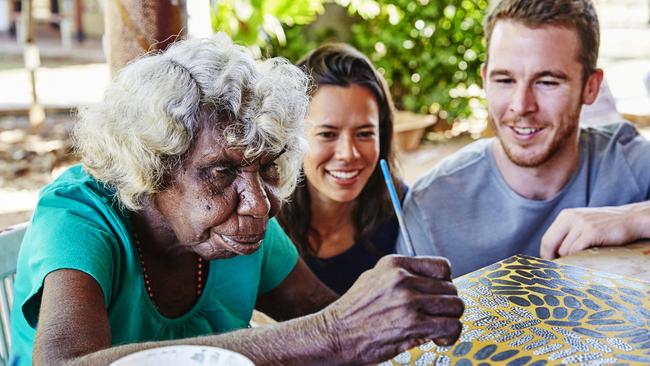
From this vantage, Mirima National Park comes into focus. This jaw-dropping expanse of 350-million-year-old sandstone cliffs, amphitheatres, gullies and ridges is often referred to as the “mini Bungles’’, for the striking similarity it shares with the actual Bungle Bungle Range, 200km south in Purnululu National Park. The distinctly Kimberley patina — striations of ochre and charcoal fringed by the dusty green of eucalyptus — was the ideal backdrop for Baz Luhrmann’s epic Australia, filmed on a cattle station here more than a decade ago.
The only Kununurra attraction more popular than Kelly’s Knob at sunset is the PumpHouse, a packed-to-the-rafters restaurant occupying the city’s heritage-listed pump station and offering the likes of smoked kangaroo loin and crumbed barramundi with oven-roasted tomatoes. Tables overlook Lake Kununurra, home to another 7000 freshwater crocodiles.
“When I first moved here, I was a little apprehensive about diving in,” says restaurant owner Dominique Breig. “Now, I don’t think twice. It’s what you do when you live in Kununurra.”
In the know
Kununurra hosts the 20th anniversary Ord Valley Muster from May 21-29, with 30 rodeo, dining, entertainment and Indigenous cultural events.
Natasha Dragun was a guest of Tourism Western Australia.


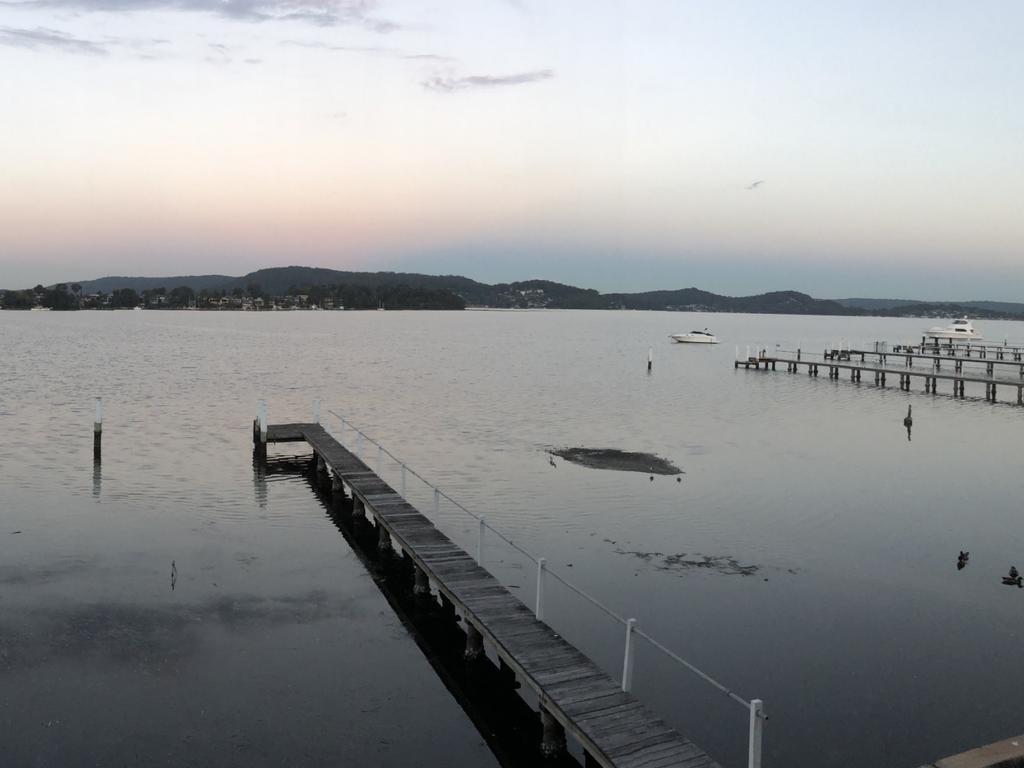

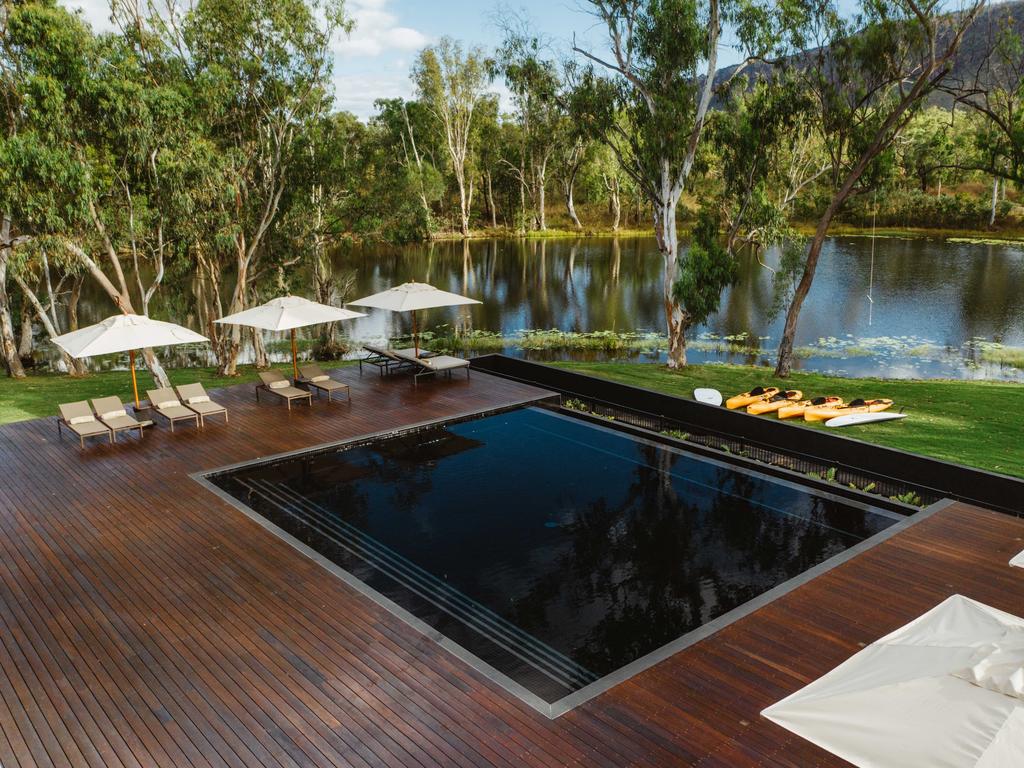
To join the conversation, please log in. Don't have an account? Register
Join the conversation, you are commenting as Logout